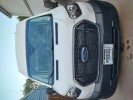Assuming that your battery is in the front and you want power to the rear/galley, has anyone run a single large wire (6awg or less) to a fusebox in the rear rather than separate smaller wires to each appliance.
The thought is less power loss and flexibility to add more components later.
Pluses, minus, throughts?
Assuming you want to add more electrical later, has anyone added empty wire chases? Awhile ago, I saw several TD with electrical conduit in the floor. This allowed for wiring from the front to the rear without going through the walls or roof and keep the wiring unexposed. This type of construction does not appear to be very common more recently.
Thoughts?
Using a large power line
10 posts
• Page 1 of 1
Using a large power line
Michael Krolewski
Scottish Terrier Fancier
Scottish Terrier Fancier
- troubleScottie
- Donating Member
- Posts: 359
- Images: 16
- Joined: Sat Apr 11, 2015 5:02 am
- Location: Seattle, WA
Re: Using a large power line
2009 6.5'X11' TTT - Boxcar
All it takes is a speck of faith and a few kilowatts of sweat and grace.

Boxcar Build
aVANger Build
All it takes is a speck of faith and a few kilowatts of sweat and grace.

Boxcar Build
aVANger Build
-

bdosborn - Donating Member
- Posts: 5493
- Images: 772
- Joined: Wed May 05, 2004 11:10 pm
- Location: CO, Littleton




